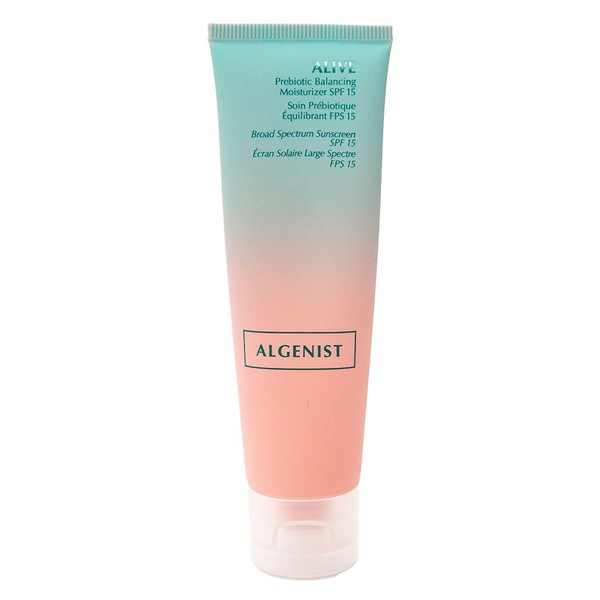
What Happens To Your Skin On Your Period & What You Can Do
Firstly, Know That Hormonal Skin Changes Aren’t A Myth
“Often, people ask me if out-of-whack skin is actually related to your periods – it’s absolutely not a myth. Hormonal fluctuations can cause changes in your skin – and sometimes, quite dramatically. Usually it happens during your period, or a couple of days prior to it. Breakouts – if this is your issue – will peak the week before your period begins, which is often referred to as the ‘PMS phase.’ If you think about it, it makes sense. Hormones – including progesterone and oestrogen – are involved in menstruation and they fluctuate all throughout the month. This can cause your oil glands to go into overdrive, increasing oil production, and in turn, breakouts, redness and general inflammation.”
Take Note Of Key Areas
“Breakouts and skin issues can occur everywhere, but typically, you may notice them more around the jawline area, while your skin on the whole may look oilier and shinier than normal. Cortisol – our stress hormone – is another key trigger of skin issues pre-period. When this level is changed in our systems, it increases the likelihood of clogged pores, which again, is thanks to excess oil production. These sorts of hormones can also increase skin inflammation, as well as acne-causing bacteria, which is why unfortunately, breakouts aren’t always escapable.”
Look Out For The Decline Of Progesterone
“As soon as your period starts, progesterone begins to decline. Your period marks the first day of your menstrual cycle – levels of progesterone and oestrogen are at their lowest on this day. With this in mind, your skin should start clearing up and become less oily, however, you may notice your complexion stays quite dull and your skin will feel dry throughout this time. Your skin can also become quite sensitive, so keep an eye on this and make sure it’s topped up with hydrating ingredients like hyaluronic acid. On the flipside of the above, it’s worth noting that a few days before you ovulate, oestrogen levels peak – this is why some people often say their skin looks the best it ever has – it’s short-lived, but almost like being pregnant, when you’re glow-y, and generally healthier-looking at the early stages.”
Use Key Ingredients Pre-Period
“The week before your period, consider using products that contain salicylic acid to get rid of excess oil. Another ingredient I recommend is benzoyl peroxide. Great for anti-inflammatory, it works well to take down any redness and puffiness. Zinc is another great ingredient to try as it stops the overproduction of sebum and helps to prevent spots from forming altogether, while white willow provides a potent dose of something called ‘salicin,’ which is well-loved for its ability to dissolve dead skin cells and excess keratin, while also unblocking clogged pores and promoting skin healing, too.”
Take A Gentle Approach
“During your period, I would advise using gentle skin cleansers and moisturisers to help the skin recover from the previous week’s inflammation. Look out for creams with ceramides and hyaluronic acid as these maintain hydration, as well as a healthy skin barrier. The reason I recommend this is because your period causes your skin to become more easily irritated due to low oestrogen levels. Try to avoid fragranced products – these can irritate the skin further – and always apply an SPF for extra protection. Cut back on physical and chemical exfoliators, as well as retinoids because they can all exacerbate dryness as well as feelings of tightness within the skin.”
Stick To The Basics
“Though you should tweak your routine a little – with gentle formulas and so forth – it’s important you maintain some monotony with your skin, too. You should stick to cleansing your face twice a day and if you suffer with acne generally, use products that are labelled as non-comedogenic – they’re less likely to clog your pores. I also recommend you use an oil-free moisturiser, or one that is gel-based for hydration, but also a lighter finish that isn’t too occlusive. Finally, it’s a boring thing to say, but try and limit foods that have a high glycaemic index (GI) if you find your hormones has a big bearing on your skin. This includes processed foods, sugary drinks and white bread – all can affect your hormones and in turn, your skin. You don’t have to cut them out entirely, but reducing the amount you eat will absolutely help, as will plenty of sleep.”
A Final Thing To Note…
“While the above is relevant for everyone, it’s also important to know that hormones can – and will – affect your body throughout the entire month, not just through your period or the week before it – despite this being the prime time your skin may react. Your cycle will influence your overall mood, energy levels and the condition of your hair, too. If you feel your issues are worsening, or not related to hormones alone, always seek out a professional, or your GP for further advice.”
Follow Dr Sonia @DermGP
Dr Sonia’s Product Recommendations For Hormonal Skin…






DISCLAIMER: We endeavour to always credit the correct original source of every image we use. If you think a credit may be incorrect, please contact us at info@sheerluxe.com.

